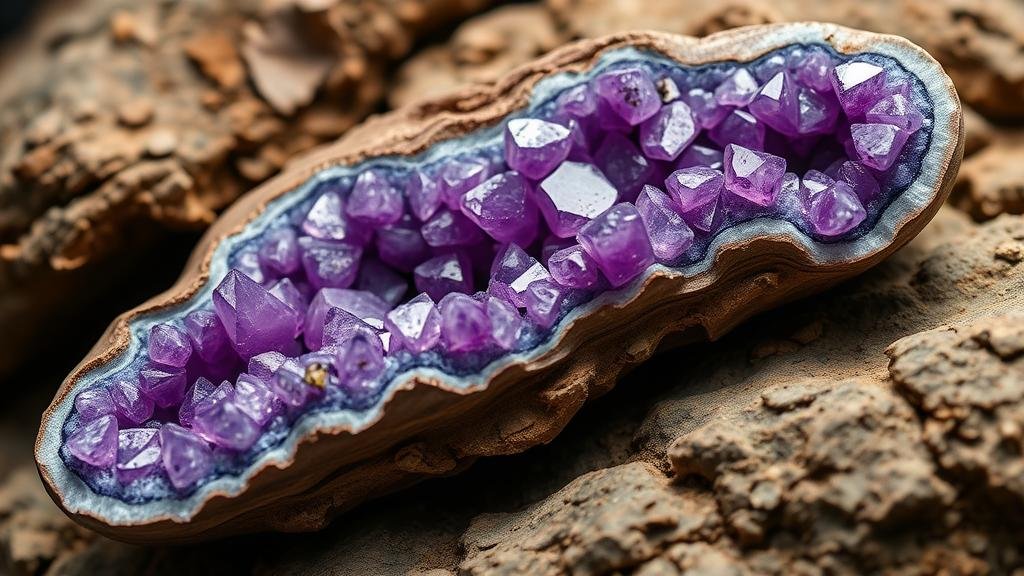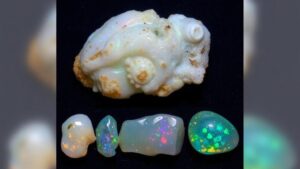Amethyst Dreams: Unearthing Geodes with Hidden Purple Hearts
Amethyst Dreams: Unearthing Geodes with Hidden Purple Hearts
For rockhounds and mineral collectors, amethyst geodes are among the most coveted treasures of the earth. These stunning formations boast exquisite crystal interiors and tantalizing hues of deep purple that can spark joy and fascination. This article will explore the intricacies of amethyst geodes, the process of unearthing them, and practical tips for enthusiasts looking to add these mesmerizing specimens to their collections.
The Science Behind Amethyst Geodes
Amethyst is a variety of quartz characterized by its striking purple color, which results from the presence of iron and other trace elements. Typically, geodes form in volcanic or sedimentary environments, where mineral-rich water fills cavities in rock, allowing quartz crystals to grow over a prolonged period.
Geodes can vary significantly in size, typically ranging from a few inches to upwards of several feet in diameter. Inside, they often contain perfectly formed amethyst crystals radiating from the outer walls to the center, creating a breathtaking display.
Identifying Quality Amethyst Geodes
When seeking the perfect amethyst geode, collectors should be aware of the defining characteristics that contribute to its overall value and aesthetic appeal. Key factors include:
- Color Saturation: Rich, vibrant purples are highly sought after, with deep hues often commanding higher prices.
- Crystal Clarity: Clear, well-formed crystals without significant inclusions are considered more valuable.
- Overall Size: While larger geodes tend to be more impressive, smaller geodes can be just as stunning if they exhibit quality features.
- Shape and Orientation: Geodes with more unique shapes or those displaying interesting formations can enhance visual appeal.
The Process of Unearthing Amethyst Geodes
Finding amethyst geodes can often be a thrilling adventure for rockhounds. While some geodes can be bought at trade shows or rock shops, others require field collecting. Here are key steps and locations to consider when searching for these treasures:
- Research Locations: Notable sites for collecting amethyst geodes include areas in Brazil, Uruguay, and the southwestern United States. For example, the state of Arizona is known for its geode deposits, particularly around the area of Billings and the Black Hills.
- Use Proper Tools: Rock hammers, chisels, safety goggles, and gloves are essential for safely extracting geodes from rocky terrains.
- Look for Indicators: Geodes often appear as round or oval-shaped boulders on the surface, often distinguished by their fibrous texture. Cracks in the rock can also indicate the presence of a geode.
Valuable Insights into Geode Collection
As with any hobby, experience is instrumental in successful collecting. Here are some actionable takeaways for rockhounds looking to improve their technique:
- Join a Rockhound Club: Local rockhounding clubs can provide invaluable resources for learning collecting techniques, as well as connections and access to private lands.
- Document Your Finds: Keeping a detailed journal of geode locations, characteristics, and the extraction process can help refine your skills over time.
- Practice Sustainability: Always collect responsibly by adhering to local laws and regulations, ensuring future generations can enjoy these natural wonders.
Conclusion
Unearthing amethyst geodes is not only an exciting hobby but also a gateway into the captivating world of geology and mineralogy. Whether you are an experienced collector or a beginner, understanding what to look for, where to search, and how to properly handle these delicate specimens is vital. By following best practices and cultivating a deep appreciation for these natural formations, collectors can enjoy the process while also enriching their collections with these hidden purple hearts of the earth.


